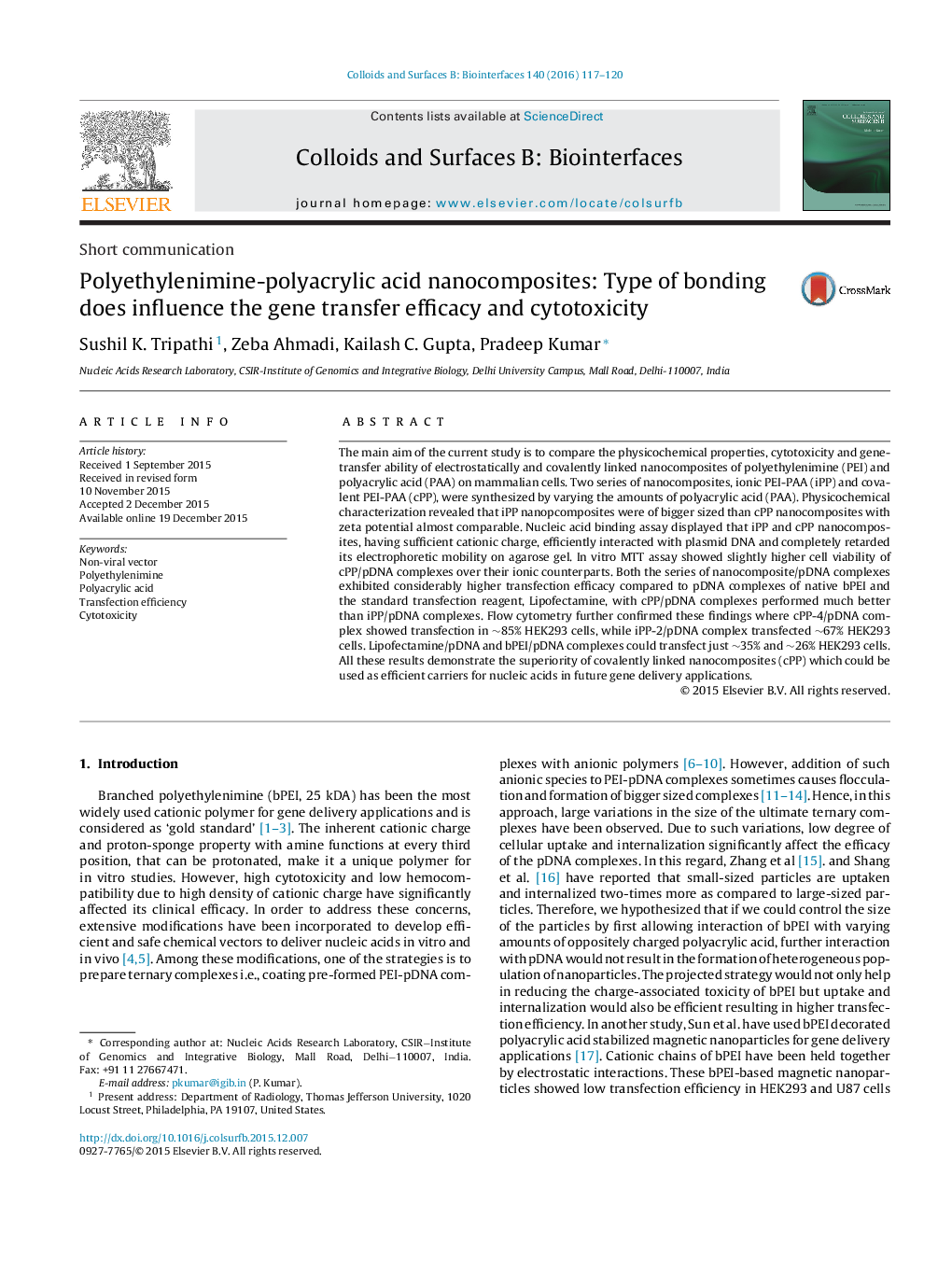| کد مقاله | کد نشریه | سال انتشار | مقاله انگلیسی | نسخه تمام متن |
|---|---|---|---|---|
| 599095 | 1454264 | 2016 | 4 صفحه PDF | دانلود رایگان |
• The projected strategy is simple and efficient.
• Ionic and covalent PP nanocomposites efficiently condensed nucleic acids and delivered into the mammalian cells.
• Covalently linked nanocomposites (cPP) exhibited higher gene transfer efficacy than iPP nanocomposites, native polymer and Lipofectamine2000.
• cPP/pDNA complexes were also less toxic.
The main aim of the current study is to compare the physicochemical properties, cytotoxicity and gene-transfer ability of electrostatically and covalently linked nanocomposites of polyethylenimine (PEI) and polyacrylic acid (PAA) on mammalian cells. Two series of nanocomposites, ionic PEI-PAA (iPP) and covalent PEI-PAA (cPP), were synthesized by varying the amounts of polyacrylic acid (PAA). Physicochemical characterization revealed that iPP nanopcomposites were of bigger sized than cPP nanocomposites with zeta potential almost comparable. Nucleic acid binding assay displayed that iPP and cPP nanocomposites, having sufficient cationic charge, efficiently interacted with plasmid DNA and completely retarded its electrophoretic mobility on agarose gel. In vitro MTT assay showed slightly higher cell viability of cPP/pDNA complexes over their ionic counterparts. Both the series of nanocomposite/pDNA complexes exhibited considerably higher transfection efficacy compared to pDNA complexes of native bPEI and the standard transfection reagent, Lipofectamine, with cPP/pDNA complexes performed much better than iPP/pDNA complexes. Flow cytometry further confirmed these findings where cPP-4/pDNA complex showed transfection in ∼85% HEK293 cells, while iPP-2/pDNA complex transfected ∼67% HEK293 cells. Lipofectamine/pDNA and bPEI/pDNA complexes could transfect just ∼35% and ∼26% HEK293 cells. All these results demonstrate the superiority of covalently linked nanocomposites (cPP) which could be used as efficient carriers for nucleic acids in future gene delivery applications.
Figure optionsDownload as PowerPoint slide
Journal: Colloids and Surfaces B: Biointerfaces - Volume 140, 1 April 2016, Pages 117–120
